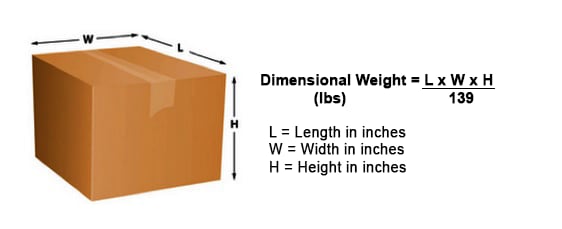How to Determine Shipping Costs When Selling Online

Table of Contents
- Importance Of Shipping Cost
- I. The Formula for Shipping Costs
- II. Shipping Charges for Online Shopping
- III. Including Shipping Costs in a Product
- IV. Calculation of Courier Charges
- V. The Percentage of Shipping Cost
- VI. Understanding the Calculated Shipping Rule
- VIII. Distributing Shipping Cost per Unit
- I X. Calculating Shipping Costs in Excel
- Conclusion
- FAQs
- Experience Seamless Shipping with StoreBud!
What are Shipping Costs?
Shipping costs encompass the expenses incurred when delivering a product from your store or warehouse to your customer's doorstep. These costs are crucial considerations for retailers, as they directly impact profitability and customer satisfaction. Let's delve deeper into the various components of shipping costs:
Packaging Materials
: One aspect of shipping costs involves the expenses associated with packaging materials such as boxes, bubble wrap, tape, and stickers. These materials are essential for ensuring the safe and secure transit of products.
Order Fulfillment
: Another factor to consider is the cost of order fulfilment, which includes the labour involved in picking, packing, and dispatching items. This cost covers the wages or salaries of employees responsible for preparing the orders for shipment.
Courier or Shipping Service
: Engaging the services of a courier or shipping company is essential for transporting the packages to the customers. Shipping costs include the charges imposed by the courier for collecting the items from your location and delivering them to the customers' addresses.
International Shipping Fees
: When shipping internationally, additional costs come into play. These may include import or export fees, customs duties, and taxes levied by the respective countries involved in the shipping process. It's crucial to factor in these expenses when calculating the overall shipping costs for international orders.
It is essential to note that beyond these primary cost components, other expenses may arise depending on specific requirements or circumstances. For instance, additional services such as insurance, tracking, or signature confirmation may incur extra charges but can provide peace of mind and enhanced customer experience.

Importance Of Shipping Cost
Calculating shipping costs is an important process for several reasons:
Cost Management
: Accurately calculating shipping costs allows businesses to understand and manage their expenses. By having a clear understanding of the costs associated with shipping, retailers can make informed decisions regarding pricing strategies, product margins, and overall profitability.
Competitive Pricing
: Shipping costs play a significant role in determining the final price of a product. By calculating shipping costs, businesses can ensure that their pricing remains competitive within the market while covering shipping expenses. This enables retailers to attract customers with fair pricing and avoid overcharging or undercharging for shipping services.
Customer Expectations
: Today's customers have high expectations when it comes to shipping. They value fast and reliable delivery at reasonable costs. By accurately calculating shipping costs, businesses can set realistic delivery timeframes and offer competitive shipping rates, meeting customer expectations and enhancing the overall shopping experience.
Transparency
: Calculating shipping costs allows businesses to be transparent with their customers. Clearly communicating shipping costs upfront helps customers make informed purchasing decisions, reducing the likelihood of abandoned carts and customer dissatisfaction due to unexpected shipping charges at checkout.
Profitability and Efficiency
: Understanding shipping costs enables businesses to identify areas for cost optimization and efficiency improvement. By analyzing shipping expenses, retailers can identify opportunities to negotiate better rates with carriers, optimize packaging to reduce dimensional weight charges, streamline order fulfilment processes, and explore cost-saving measures such as consolidating shipments or utilizing shipping aggregators. These efforts can help improve overall profitability and operational efficiency.
International Shipping Considerations
: Calculating shipping costs becomes even more crucial for businesses involved in international trade. International shipping involves additional complexities, such as customs duties, taxes, and regulations. By accurately calculating shipping costs, businesses can account for these additional expenses and ensure compliance with international shipping requirements, avoiding delays, penalties, and customer dissatisfaction.
I. The Formula for Shipping Costs
Shipping costs are determined by a variety of factors, including package weight, dimensions, distance, and chosen shipping method. The formula used to calculate shipping costs is a combination of a base rate, weight or dimension factor, and any additional services requested. The formula can vary depending on the carrier or shipping service provider. By understanding the formula, you can have better control over overestimating shipping costs for your business or as a customer.

II. Shipping Charges for Online Shopping
For online shopping, shipping charges are typically calculated based on package weight, dimensions, destination, and the chosen shipping service. Online retailers often provide estimated shipping costs during the checkout process, taking into account these factors. Customers need to be aware of shipping charges and consider them when purchasing.
III. Including Shipping Costs in a Product
Including shipping costs in a product can be approached in a couple of ways. One option is to factor the average or estimated shipping cost into the product's pricing. This approach allows for "free shipping" or reduced shipping rates for customers. Another option is to charge a separate shipping fee during the checkout process. This transparent approach ensures that customers are aware of the shipping costs associated with their purchase.
IV. Calculation of Courier Charges
Courier charges are calculated based on various factors such as package weight, dimensions, distance, chosen shipping method, and any additional services required, such as insurance or tracking. Different courier companies may have their specific formulas or rate tables to determine the charges. It's essential to understand how courier charges are calculated to effectively compare and select the most suitable courier for your shipping needs.
V. The Percentage of Shipping Cost
The percentage of shipping cost refers to the portion of the product price that is allocated to cover shipping expenses. This percentage can vary depending on the business model and shipping policies. It is typically calculated by applying a fixed rate to the product price. For example, if the shipping cost percentage is 10% and the product price is $50(approximately 4100 INR), the shipping cost would be $5 (approximately 375 INR). Determining the appropriate rate requires consideration of factors such as product margins, shipping volume, and customer expectations.
VI. Understanding the Calculated Shipping Rule
A calculated shipping rule is a predefined set of conditions and formulas used by e-commerce platforms or shipping carriers to automatically determine shipping costs. These rules consider factors such as package weight, dimensions, destination, shipping method, and additional services. Calculated shipping rules streamline the shipping cost calculation process and provide accurate quotes for customers.
VIII. Distributing Shipping Cost per Unit
Distributing shipping costs per unit ensures a fair allocation of shipping expenses. To distribute shipping costs, you divide the total shipping cost by the number of units being shipped. This method helps businesses determine the shipping cost to be attributed to each unit, making pricing and profitability analysis more accurate.
I X. Calculating Shipping Costs in Excel
Excel can be a powerful tool for calculating shipping costs efficiently. By setting up a spreadsheet with the necessary formulas and functions, you can automate the calculation process. You can use Excel functions such as SUM, IF, VLOOKUP, and nested formulas to handle various factors involved in shipping cost calculations. Excel provides flexibility and customization options, making it a valuable tool for businesses managing shipping costs.
Here the formula =VLOOKUP(F4,B3:C7,2,1)
Conclusion
Shipping costs are a crucial aspect of e-commerce that impacts both businesses and customers. By understanding the formula for calculating shipping costs, including them in product pricing, and optimizing them, businesses can provide transparent shipping options and maintain profitability. Customers can make informed purchasing decisions based on shipping charges. Consider the various factors involved in shipping cost calculation, utilize automation tools like Excel, and aim to optimize your shipping operations to maximize efficiency and customer satisfaction.
FAQs
Experience Seamless Shipping with StoreBud!
Ready to simplify your shipping operations and enhance your online store? Look no further than StoreBud! With our user-friendly platform, you can streamline shipping cost calculations, automate shipping label generation, and access discounted shipping rates from leading carriers. Sign up with StoreBud now and launch your online store in just 2 minutes. Streamline your shipping process and take your business to new heights!
Q. What additional services should I consider when calculating shipping costs?
A. When calculating shipping costs, consider these additional services: Tracking and insurance: These services provide visibility and protect against loss or damage. Signature confirmation: Required for high-value items to ensure delivery to the intended recipient. Customs clearance: For international shipments, factor in customs duties, taxes, and associated paperwork.
Q. Are there any industry standards for the percentage of shipping costs?
A. There are no specific industry standards for the percentage of shipping costs, as it varies depending on factors such as the type of business, shipping volume, and specific requirements. It is important to analyze your business needs and evaluate shipping costs in relation to your overall expenses and profit margins.
Q. How can I negotiate better shipping rates with carriers?
A. To negotiate better shipping rates with carriers, consider the following strategies: Consolidate shipments: Combine multiple orders into one shipment to leverage volume discounts. Shop around: Obtain quotes from multiple carriers and use the competition to your advantage. Build relationships: Establish a good rapport with carrier representatives to potentially secure better rates. Highlight your shipping volume: Emphasize your business's shipping volume and potential for future growth.
Q. What are some strategies for reducing shipping costs for international shipments?
A. Strategies for reducing shipping costs for international shipments include: Choose economical carriers: Compare rates and services offered by different carriers for international shipping. Optimize packaging: Use efficient packaging materials and sizes to reduce dimensional weight and minimize costs. Utilize consolidation services: Consolidate multiple shipments into one larger shipment to benefit from bulk rates. Explore fulfillment centers: Consider using local fulfillment centers in destination countries to reduce shipping distances. Understand customs regulations: Research and comply with customs requirements to avoid delays and additional fees. Evaluate Incoterms: Choose appropriate Incoterms that clearly define the responsibilities and costs between buyer and seller.